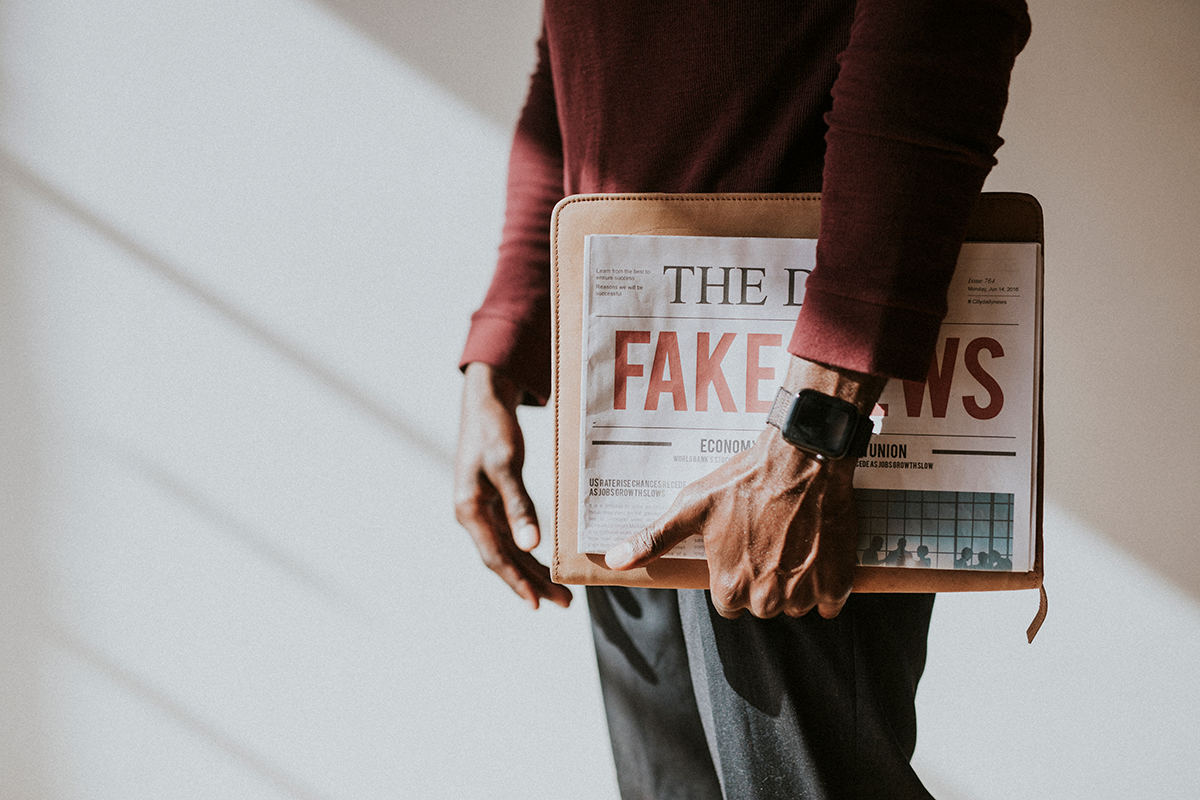What is Fake News
Fake news may have seemed like it has just gained popularity in recent times especially during the 2016 U.S. elections but this term has actually been in use for more than a century. The term “fake news” has been used to mean “falsehood printed as news” (Kalsnes, 2018). Lazer et al. (2018) define “fake news” as “fabricated information that mimics news media content in form but not in organizational process or intent”.
Digital misinformation is becoming increasingly pervasive and serious in the digital age to the point where the World Economic Forum (WEF) has listed it as one of the key risks to our society, alongside threats like terrorism and cyber attacks (Howell, 2013).
Impact of Fake News
Why is fake news harmful and why should we care about its spread? In considering the impact of fake news, let’s first examine its prevalence in our society today. It was estimated that in the month leading up to the 2016 U.S elections, out of all the published stories the average American came across, one to three of the stories were fake (Allcott & Gentzkowas, 2017, as cited in Lazer et. al, 2018). This has far-reaching implications that can threaten democracies and the fate of nations.
The threat of fake news is further made worse by the proliferation of social bots, “computer programs that control online social network accounts and mimic real users” (Boshmaf et al., 2011). These social bots can create an impression of popularity for a piece of story when they interact with the story through liking and sharing. Imagine the magnitude and reach of the fake story when propagated by these social bots. It is estimated that between 9-15% of Twitter activity are bots (Varol et al., 2017, as cited in Lazer et al., 2018). In another estimate, Facebook may be infested by 60 million bots (Senate Judiciary Committee, 2017, as cited in Lazer et al., 2018). These are serious numbers that force us to rethink how much of what we read online is actually true.
Combating Fake News Through Education
Besides using technology to fight the war against fake news, education is our next best option. Teaching students to develop information-literacy skills can help combat fake news as students become savvier netizens. Teach students to be skeptical when it comes to online media consumption. Being skeptical raises our guard and makes us less vulnerable to believing everything we consume online.
In his book Net Smart, Rheingold (2012) advocates teaching students how to be better detectives online by improving searching skills. This includes searching to uncover credibility and authority. Do not stop at accepting the first fact we find online but rather triangulate the information by researching multiple sources. Rheingold suggested using the Publish or Perish software program to retrieve and analyze academic citations and triangulate information on scholarly articles.
Also, another powerful way is to share the voice of student leaders who advocates the fight against fake news. Here is a practical TEDxYouth talk by student leader Hannah Logue on How to Spot Fake News.
Logue (2019) shares that she was taught to focus on 5 questions when gathering information:
- Currency – Is it current?
- Reliability – Is it reliable?
- Authority – Is it authoritative?
- Accuracy – Is it accurate?
- Purpose – What is the purpose of the story?
However, Logue argued that the C-R-A-A-P method may be insufficient in fake news detection, citing an example where a piece of news story was reported by multiple famous news outlets which were supposedly credible, with the purpose of informing the public. As it turned out, the story was found to be inaccurate in the end and did not portray the full version of the truth.
Instead, Logue (2019) presented her own method in fake news detection by using the F-A-B-L-E method:
- Find – find original footage, figures, and research to ensure that one is educated on what is true and what is not, rather than relying on others to summarize for us.
- Analyze – analyze the headline to see if it was written to elicit a reaction as some juicy headlines may not necessarily be concerned with the truth.
- Bias – Check your own bias as personal biases can cause us to avoid skepticism. At times, our speed to trusting something may be due to our innate wish for something to be true. Our desire to verify facts may be lowered when something plays too close to our own worldview.
- Look – Lookup and use fact-checkers like Snopes or PolitiFact to vet stories before sharing
- Exert – Exert self-control before sharing any stories online especially when you are not entirely sure if the story is accurate.
In summary, when it comes to the battle against fake news, it helps to be skeptical! When we are skeptical, we begin questioning and investigating sources rather than taking in everything we read as the entire truth.
References
- Boshmaf, Y., Muslukhov, I., Beznosov, K., & Ripeanu, M. (2011). The Socialbot Network: When bots socialize for fame and money. Proceedings of the 27th Annual Computer Security Applications Conference on – ACSAC ’11. https://doi.org/10.1145/2076732.2076746 (Boshmaf et al., 2011)
- Howell, L. (2013). Digital wildfires in a hyperconnected world. Global Risks 2013. Retrieved November 14, 2021, from http://reports.weforum.org/global-risks-2013/risk-case-1/digital-wildfires-in-a-hyperconnected-world/. (Howell, 2013)
- Kalsnes, B. (2018, September 26). Fake News. Oxford Research Encyclopedia of Communication. Retrieved November 14, 2021, from https://doi.org/10.1093/acrefore/9780190228613.013.809. (Kalsnes, 2018)
- Lazer, D. M. J., Baum, M. A., Benkler, Y., Berinsky, A. J., Greenhill, K. M., Menczer, F., Metzger, M. J., Nyhan, B., Pennycook, G., Rothschild, D., Schudson, M., Sloman, S. A., Sunstein, C. R., Thorson, E. A., Watts, D. J., & Zittrain, J. L. (2018, March 9). The Science of Fake News. Science Magazine. Retrieved November 14, 2021, from https://scholar.harvard.edu/files/mbaum/files/science_of_fake_news.pdf. (Lazer et al., 2018)
- Logue, H. (2019, September 13). How to spot fake news: Hannah Logue: TEDxYouth@Lancaster [Video]. TEDx. Retrieved November 14, 2021, from https://youtu.be/YDxGZIW8Z74. (Logue, 2019)
- Rheingold, H. (2012). Net smart: How to thrive online. The MIT Press.


Thanks for raising this critical issue, Mun. I love C-R-A-A-P and method F-A-B-L-E method to detect fake news. These methods are practical. I agree with your last statement, and we start practicing questioning and investigating sources rather than taking in everything we read as the entire truth. Notably, this is an urgent action for educators and parents.